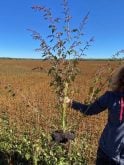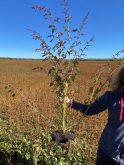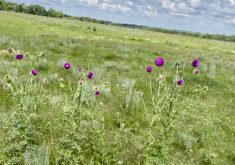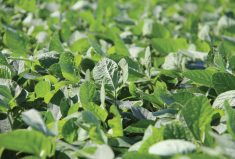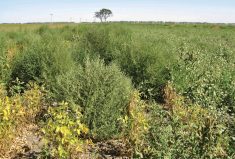Manitoba’s weed specialist says it’s time to be vigilant about waterhemp.
“We’ve got a lot of waterhemp findings in the province all of a sudden,” Kim Brown-Livingston told the Co-operator. “It’s resistant to multiple herbicide groups, it’s a very aggressive weed, it’s a very prolific seed producer and … you just can’t get rid of it once it’s here.”
Waterhemp (Amaranthus tuberculatus) is one of three pigweeds classified as tier one weeds in the Manitoba Noxious Weeds Act. The other two are smooth pigweed and palmer amaranth. The Act ranks plants according to their threat levels, with tier one being the greatest threat. It sets out requirements for control or eradication measures for different plants and it applies to anyone owning or occupying land in Manitoba on which the plant is located.
Read Also
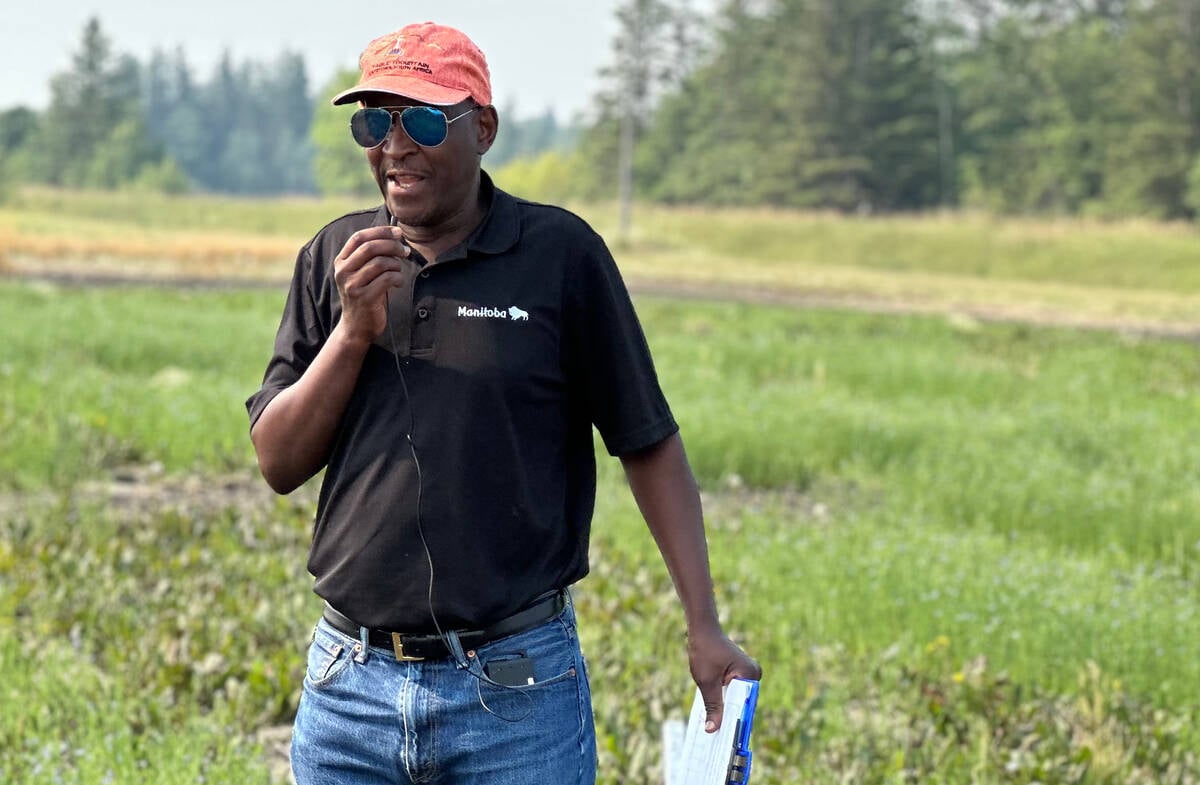
How much nitrogen can farmers really cut?
Manitoba fertilizer trials look for nitrification inhibitor sweet spot, to lower greenhouse gas emissions and cost without hurting yield.
It falls to farmers to ensure this weed doesn’t get a foothold in the province.
“There’s zero tolerance for this weed. It’s a tier one weed and it has to be destroyed,” Brown-Livingston said. “You cannot let it go to seed.”
As the name suggests, waterhemp likes wet conditions, and Brown-Livingston says she suspects that’s why there is an uptick this year.

Manitoba has avoided the crop devastation caused by waterhemp in Ontario and in the U.S. Midwest and Great Plains regions. Brown-Livingston points to a recent Ontario study that showed a 99 per cent yield loss in corn where waterhemp was left unchecked because it was not sprayable.
“I just don’t know how much more I can impress upon you how devastating this weed can be,” she said. “In Ontario, there are populations that are resistant to [herbicide] groups two, five, seven, nine and 14.”
But she also notes there are populations elsewhere in the world where no herbicides are effective so hand-weeding is the only control option.
Waterhemp was first discovered in Manitoba in 2016. So far, samples found here are resistant to herbicide groups two and nine. There have been confirmed waterhemp findings in the RMs of Rhineland and Hanover, and samples have been submitted for testing from the RMs of Morris and Dauphin.
Waterhemp has a particular affinity for row crops because it likes sunlight. But this year, Brown-Livingston said it has been found for the first time in several canola fields.

The waterhemp in Manitoba already has group two and nine herbicide resistance, she said, “so when you are spraying areas on that canola, you’re not going to get this weed. You’ve probably got all the other weeds out, but you’re not going to get this one.”
As with all crops this year, canola got a late and wet start. And while a lot of the crop has recovered well since spring, there are thin spots and that’s where waterhemp has been found.
It is a tall weed, growing seven to eight feet tall so it’s fairly noticeable in most crops, though corn may be an exception.
Brown-Livingston suggests scouting all crops and investigating any tall weeds. If suspect weeds are found, they should be pulled immediately and Manitoba Agriculture should be contacted to test them.
So far, she hasn’t found any waterhemp with viable seed but the seed heads are just beginning to form.
“These are pigweeds. They can set viable seed within a couple of weeks so I would say it is critical … to really be watching those weeds,” she said. “We do not want this thing to set seed.”




